September 21....More amazing temples
Before I begin, I want to wish all of you a very Happy Thanksgiving
. This might be confusing since the date of this blog is 9/21. In real time, it's Nov. 24 and we arrived home on the 21st, after a long, but fabulous, 17 weeks and three days. I am committed, however, to finishing the blogs, if for no other reason, to prove to Bill that I can do it so he'll get off my case. So, hopefully, they'll keep coming your way for several more weeks as I still have Ethiopia, Kenya, Tanzania, Dubai and the cruise to do.
And, the most exciting thing to report, before I get back to Egypt, is that on Nov. 18 at about 10:30 p.m., I became a Grandma for the first time. I'm including a photo of the adorable Zoraya Nikita Nyogi-Lewis. I can't wait to see you in the flesh and will be going to New Orleans for two weeks on Jan. 4.
Now.....back to Egypt
At the end of the previous day, Mondoo had given us a printout with a short history of about 25 of the ancient Egyptian primary deities
. Since the two temples that we would be visiting this day were dedicated to three of them, he thought this information would be helpful. There were so many important gods, many of whom Mondoo had mentioned, that it was hard to keep them all straight so, it was, in fact, helpful to be able to have it all written out.
Right after breakfast, we hopped in a horse-drawn buggy that took us to Edfu, the first temple we visited. Built in the Ptolemaic period between 237 and 57 BC, Edfu temple is one of the best-preserved shrines in Egypt. The inscriptions on the walls of the temple provide important information on language, myth and religion during the Greco-Roman period in ancient Egypt.
Edfu is dedicated to the falcon head god, Horus, who is one of the most significant ancient Egyptian deities. He was worshiped from at least the late prehistoric Egypt until the Ptolemaic Kingdom and Roman Egypt and, although many falcon gods existed throughout Egypt, over time, a good number of these were assimilated into Horus, the most important
. Horus was an early sky and solar god from Upper Egypt, worshiped before the unification, and one of the oldest gods in Egyptian mythology. As the god of the sky, war and hunting, he was considered the embodiment of divine kingship, and was the protector of the reigning pharaoh.
Horus is also closely linked with the goddess, Hathor, who, in ancient Egyptian mythology, is sometimes represented as the mother of Horus, and sometimes as his wife. Festivals, representing the sacred marriage of Horus and Hathor when Hathor would come down the Nile to visit the falcon god would occur at Edfu annually.
Hathor personified the principles of joy, feminine love, and motherhood and was one of the most important and popular deities throughout the history of Ancient Egypt. She was worshiped by royalty and common people alike and can be found in most of the Ancient Egyptian tombs where she is depicted as "Mstress of the West", welcoming the dead into the next life
. In her other roles, she served as goddess of music, dance, foreign lands and fertility, as she helped women in childbirth, as well as the patron goddess of miners. The cult of Hathor predates the historic period, and the roots of devotion to her are may be a development of predynastic cults which venerated fertility, and nature in general, represented by cows. Consequently, she is depicted as a cow goddess with horns in which is set a sun disk. Many Egyptologists believe that she may be the cow goddess who is depicted on the Namer Palette, which we saw in the Cairo Museum. This palette dates from about the 31st century BC and contains some of the earliest hieroglyphic inscriptions ever found. Next to the Namer Palette in the Cairo Museum in a stone urn, dating from the 1st dynasty, on which Hathor is also depicted, suggesting a role as sky-goddess and a relationship to Horus who, as a sun god, is “housed” in her.
After we left Edfu, in a state of awe, we returned to our riverboat for lunch and to continue our cruise down the Nile to village of Kom Ombo, where we would visit the temple
. The scenery on the banks of the Nile continued to be striking and a bit more populated. We passed by slightly larger villages and saw children swimming in the river along with donkeys and cows grazing and drinking the water along the banks. As we got a glimpse of women hanging out laundry and the men in their rowboats doing their business on the river, we got a little snapshot view of what life on the banks of the Nile was like.
Later that afternoon, we visited the Temple and Crocodile Museum of Kom Ombo. It was constructed during the Ptolemaic dynasty, 180-47 BC, with some additions made later, during the Roman period. The temple is unique because of its 'double' design as it was dedicated to two different gods. The layout combines two temples in one, each side having its own gateways, courts, halls, sanctuaries and chapels. The southern half of the temple was dedicated to the crocodile god Sobek, god of fertility and creator of the world with, nonother than, Hathor while the northern part of the temple was dedicated to the falcon god Horus
. The temple is atypical because everything is perfectly symmetrical along the main axis.
We had learned a little about Horus and Hathor earlier in the day and the short history lesson that Mondoo gave us about Sobek was equally as fascinating. This crocodile god was either portrayed as a crocodile, often on a shrine or altar, or as a man with a crocodile’s head, often wearing an elaborate head-dress consisting of the horned sun-disc and upright feathers. Sobek was originally a demon, as crocodiles were such feared creatures in a nation so dependent on the Nile, so his worship began as an attempt to pacify the crocodile, reducing the danger it posed. Gradually Sobek came to symbolize the produce of the Nile, and the fertility that it brought to the land. Sometimes the ferocity of a crocodile was seen in a positive light so that Sobek was also considered a patron of the army, representing strength and power. Captive crocodiles were kept within the temple and over three hundred mummified crocodiles have been discovered in the vicinity, many of which we saw when we visited the Crocodile Museum
.
Much of the temple has been destroyed by the Nile, earthquakes, and, later, by builders who used the stones for other projects. Some of the reliefs inside were defaced by Copts who once used the temple as a church. In 1893, all the temples buildings in the southern part of the plateau were cleared of debris and restored.
I was so fascinated by the complex and very confusing history and mythology of Ancient Egypt and loved listening to the information Mondoo gave us about the pharaohs, the temples and the gods and what life was like in Ancient Egypt. If reincarnation does exist, I want to come back as an Egyptologist and archaeologist. I can only imagine the complete exhilaration one would experience, discovering a 5,000-year-old relic that had been created by one of these fascinating characters about whom we were learning.
After a very full day, we returned to the riverboat to continue our cruise down the Nile to Aswan. Bill had arranged for us to take a side trip to Abu Simbel and, since it was a 180-mile drive from Aswan to the temple, near the Sudan border, we would be leaving Aswan at 4 a.m.so that we could arrive early and visit the temples before the heat of the day. We retired soon after dinner so we could get a liltle sleep before our middle of the night wake up call.
EDFU AND KOM OMBO
Wednesday, September 21, 2016
 Aswān, Aswan, Egypt
Aswān, Aswan, Egypt
Other Entries
-
31ALL I CAN SAY IS.....BIZARRE
Aug 2824 days prior Sacele, Romaniaphoto_camera18videocam 0comment 2
Sacele, Romaniaphoto_camera18videocam 0comment 2 -
32PHOTO JOURNAL OF OUR SACELE HOME EXCHANGE
Aug 2923 days prior Săcele, Romaniaphoto_camera18videocam 0comment 5
Săcele, Romaniaphoto_camera18videocam 0comment 5 -
33VISITING THE LOVELY TOWN OF SINAIA
Aug 3022 days prior Sinaia, Romaniaphoto_camera26videocam 0comment 1
Sinaia, Romaniaphoto_camera26videocam 0comment 1 -
34OCTOBERFEST, SIGHISOARA THEN THE BLACK SEA
Aug 3121 days prior Sighisoara, Romaniaphoto_camera39videocam 0comment 3
Sighisoara, Romaniaphoto_camera39videocam 0comment 3 -
35ANOTHER COUNTRY, ANOTHER HOME EXCHANGE
Sep 0219 days prior Kosharitsa, Bulgariaphoto_camera29videocam 0comment 2
Kosharitsa, Bulgariaphoto_camera29videocam 0comment 2 -
36THE ENCHANTING VILLAGE OF SOZOPOL
Sep 0417 days prior Sozopol, Bulgariaphoto_camera34videocam 0comment 4
Sozopol, Bulgariaphoto_camera34videocam 0comment 4 -
37WE'RE ON OUR OWN
Sep 0615 days prior Sveti Vlas, Bulgariaphoto_camera12videocam 0comment 2
Sveti Vlas, Bulgariaphoto_camera12videocam 0comment 2 -
38LAST FEW DAYS IN EASTERN EUROPE
Sep 0714 days prior Sveti Vlas, Bulgariaphoto_camera21videocam 0comment 6
Sveti Vlas, Bulgariaphoto_camera21videocam 0comment 6 -
39MYSTERY OF THE MISSING LUGGAGE
Sep 1011 days prior Istanbul, Turkeyphoto_camera5videocam 0comment 1
Istanbul, Turkeyphoto_camera5videocam 0comment 1 -
40SENSORY OVERLOAD
Sep 1110 days prior Istanbul, Turkeyphoto_camera31videocam 0comment 9
Istanbul, Turkeyphoto_camera31videocam 0comment 9 -
41TAKSIM SQUARE AND THE POTATO SEARCH
Sep 129 days prior Istanbul, Turkeyphoto_camera34videocam 0comment 3
Istanbul, Turkeyphoto_camera34videocam 0comment 3 -
42MAYBE THIS IS WHAT IT LOOKS LIKE ON THE MOON
Sep 138 days prior Nevsehir, Turkeyphoto_camera29videocam 1comment 6
Nevsehir, Turkeyphoto_camera29videocam 1comment 6 -
43DAY TWO - CAPPADOCIA
Sep 147 days prior Nevsehir, Turkeyphoto_camera32videocam 0comment 5
Nevsehir, Turkeyphoto_camera32videocam 0comment 5 -
44LAST TWO DAYS IN ISTANBUL
Sep 156 days prior Istanbul, Turkeyphoto_camera29videocam 0comment 3
Istanbul, Turkeyphoto_camera29videocam 0comment 3 -
45CAIRO AND OUR FABULOUS NILE RIVER CRUISE
Sep 174 days prior Cairo, Egyptphoto_camera24videocam 0comment 5
Cairo, Egyptphoto_camera24videocam 0comment 5 -
46OUR NILE EXCURSION CONTINUES
Sep 192 days prior Luxor, Egyptphoto_camera35videocam 0comment 6
Luxor, Egyptphoto_camera35videocam 0comment 6 -
47VALLEY OF THE KINGS
Sep 201 day prior Luxor, Egyptphoto_camera34videocam 0comment 8
Luxor, Egyptphoto_camera34videocam 0comment 8 -
48EDFU AND KOM OMBO
Sep 21 Aswān, Egyptphoto_camera36videocam 0comment 5
Aswān, Egyptphoto_camera36videocam 0comment 5 -
49OUR LAST FULL DAY ON THE NILE EXCURSION
Sep 221 day later Aswān, Egyptphoto_camera32videocam 0comment 4
Aswān, Egyptphoto_camera32videocam 0comment 4 -
50THE AIRPORT FIASCO
Sep 232 days later Addis Ababa, Ethiopiaphoto_camera23videocam 0comment 4
Addis Ababa, Ethiopiaphoto_camera23videocam 0comment 4 -
51THE MESKEL FESTIVAL
Sep 265 days later Addis Ababa, Ethiopiaphoto_camera29videocam 4comment 1
Addis Ababa, Ethiopiaphoto_camera29videocam 4comment 1 -
52THE ASTOUNDING CHURCHES OF LALIBELA
Sep 287 days later Lalibela, Ethiopiaphoto_camera42videocam 0comment 2
Lalibela, Ethiopiaphoto_camera42videocam 0comment 2 -
53OUR NEW SON
Sep 298 days later Lalibela, Ethiopiaphoto_camera39videocam 1comment 4
Lalibela, Ethiopiaphoto_camera39videocam 1comment 4 -
54BACK TO ADDIS ABABA
Sep 309 days later Addis Ababa, Ethiopiaphoto_camera30videocam 3comment 2
Addis Ababa, Ethiopiaphoto_camera30videocam 3comment 2 -
55FINALLY.....THE ANIMALS!!!!
Oct 0312 days later Nairobi, Kenyaphoto_camera51videocam 2comment 6
Nairobi, Kenyaphoto_camera51videocam 2comment 6 -
56MORE SAFARI THEN BACK TO NAIROBI
Oct 06380 days later Lake Nakuru National Park, Kenyaphoto_camera35videocam 0comment 1
Lake Nakuru National Park, Kenyaphoto_camera35videocam 0comment 1 -
57FABULOUS HOME EXCHANGE IN DEBASO, KENYA
Oct 09383 days later Malindi, Kenyaphoto_camera29videocam 0comment 5
Malindi, Kenyaphoto_camera29videocam 0comment 5 -
58UNWINDING IN PARADISE
Oct 10384 days later Watamu, Kenyaphoto_camera25videocam 0comment 3
Watamu, Kenyaphoto_camera25videocam 0comment 3 -
59THE GEDI RUINS
Oct 12386 days later Gede, Kenyaphoto_camera12videocam 0comment 0
Gede, Kenyaphoto_camera12videocam 0comment 0
Comments
2025-05-22
Comment code: Ask author if the code is blank

 Aswān, Aswan, Egypt
Aswān, Aswan, Egypt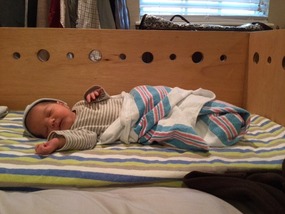
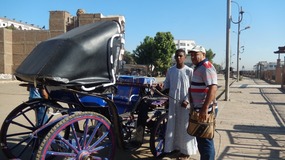
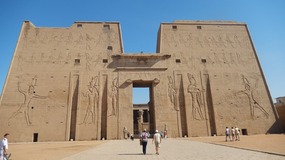
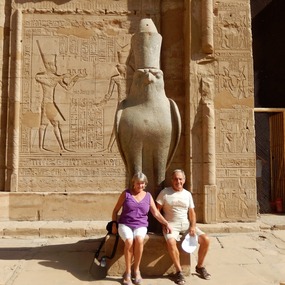
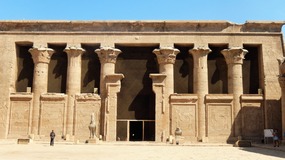
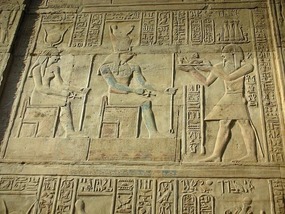
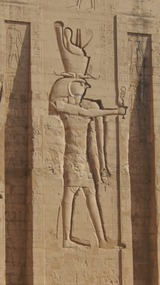



























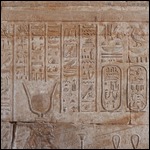

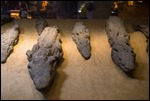





Sandi Hunter
2016-11-25
Congratulations on your beautiful granddaughter!
What a great trip. Thanks for the blogs. XXX S